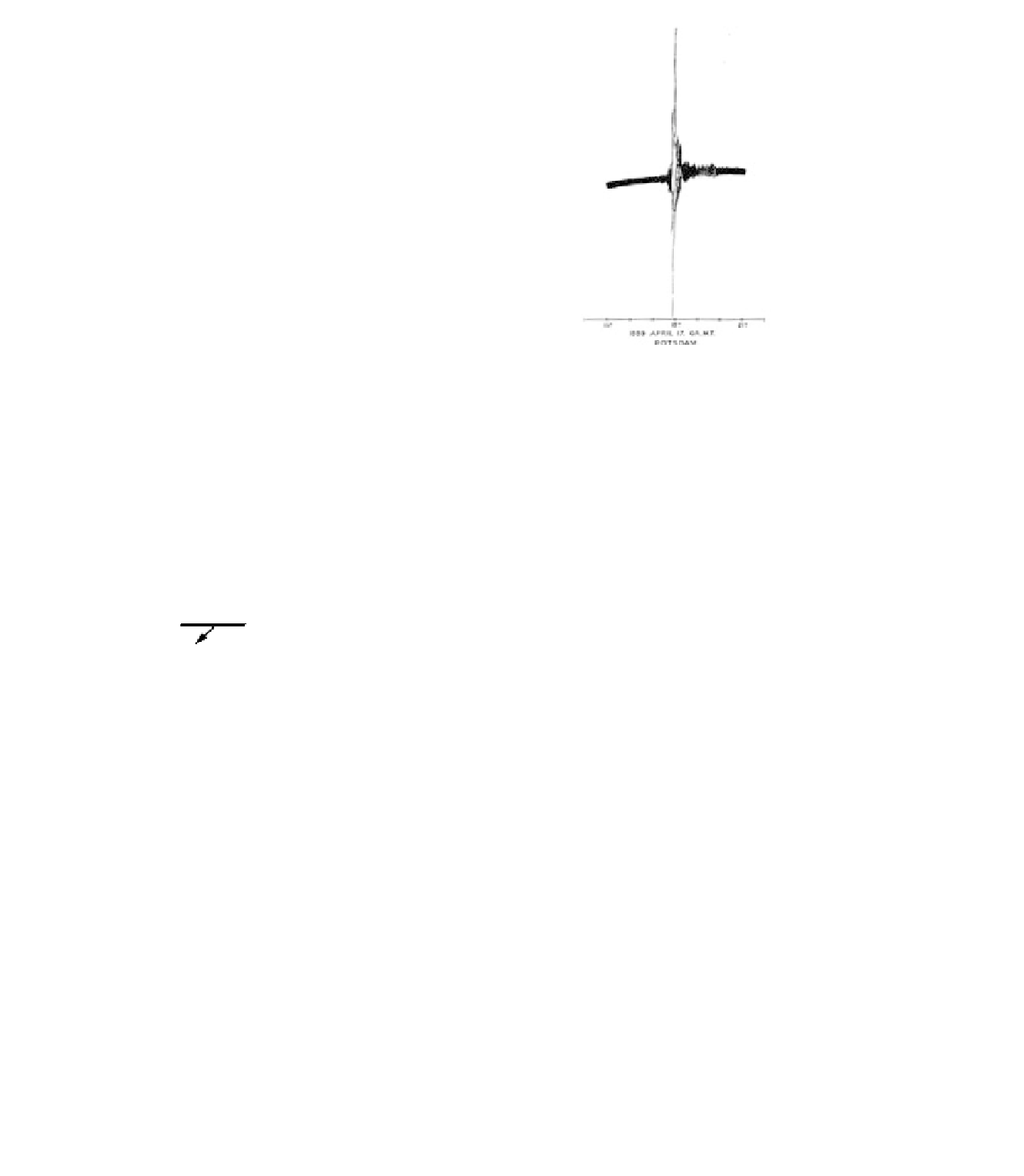Geoscience Reference
In-Depth Information
Fig. 4.127
Testament to the passage of strong surface earthquake
waves - the fallen statue of Agassiz by Stanford University arches
after the 1906 San Francisco earthquake.
Fig. 4.129
An historic seismic record: facsimile of the 1889 Tokyo
earthquake recorded by Paschwitz at Potsdam, Germany.
strong seismic waves at two observatories in north and east
Germany in 1889 (Fig. 4.129) first established that wave-
like disturbances had spread globally (126
of longitude
and 17
of latitude), seemingly through
and
over the earth
as a packet of energy during 2 h of recording from a
teleseismic (remote) source, in this case the great Tokyo
earthquake. Systematic observations of such earthquake
records led Oldham in 1897 to recognize that the
wave-like tremors consisted of first and second “prelimi-
nary tremors,” followed by much larger amplitude waves.
The inference was that the first arrivals were the faster, hav-
ing traveled through Earth as
body waves
. It was therefore
logically deduced that the longer the time of transit from
the earthquake source the longer was the time difference
separating these early arrivals from the large amplitude dis-
turbances that traveled as
surface waves
. By plotting
records from numerous earthquakes of first and second
tremor arrival times as a function of angular distance
(1
Displacement
Rigid earth surface
Paper/tape feed
Fig. 4.128
Diagrammatic representation of a simple pendulum
seismometer whose support moves with any ground motion; the
inertial reaction of the suspended mass is recorded as a time series
on a moving paper or tape feed.
rupture along a major fault may liberate up to 10
19
J of
energy.
111 km) subtended between source, Earth's
center, and recording station, a systematic separation of
the two early arrival wave packets was seen by Oldham in
his famous paper of 1906 (Fig. 4.130). Not only that, but
the separation sensibly increased with distance traveled,
though not as a linear trend for it seemed that the first
arrival tremors were transmitting relatively much more
slowly with distance traveled beyond about 130
of arc
4.17.1 Early clues concerning the nature of
seismic waves
Ingenious inertial seismometers from second century
AD
China were constructed on the basis that first motion
seismic waves were directional. Nowadays direct visualiza-
tion of ground motions induced by passing waves close to
epicentral locations can be recorded by the inertial reactions
of supermarket trolleys as recorded by security cameras.
The near-simultaneous arrival of the first motions of
. More
startlingly, at about 120
of spread the second tremor
arrivals had stopped completely, to reappear and be
delayed by up to 10 min at about 150
arc length. Oldham
deduced that the Earth must have a massive dense core with













Search WWH ::

Custom Search